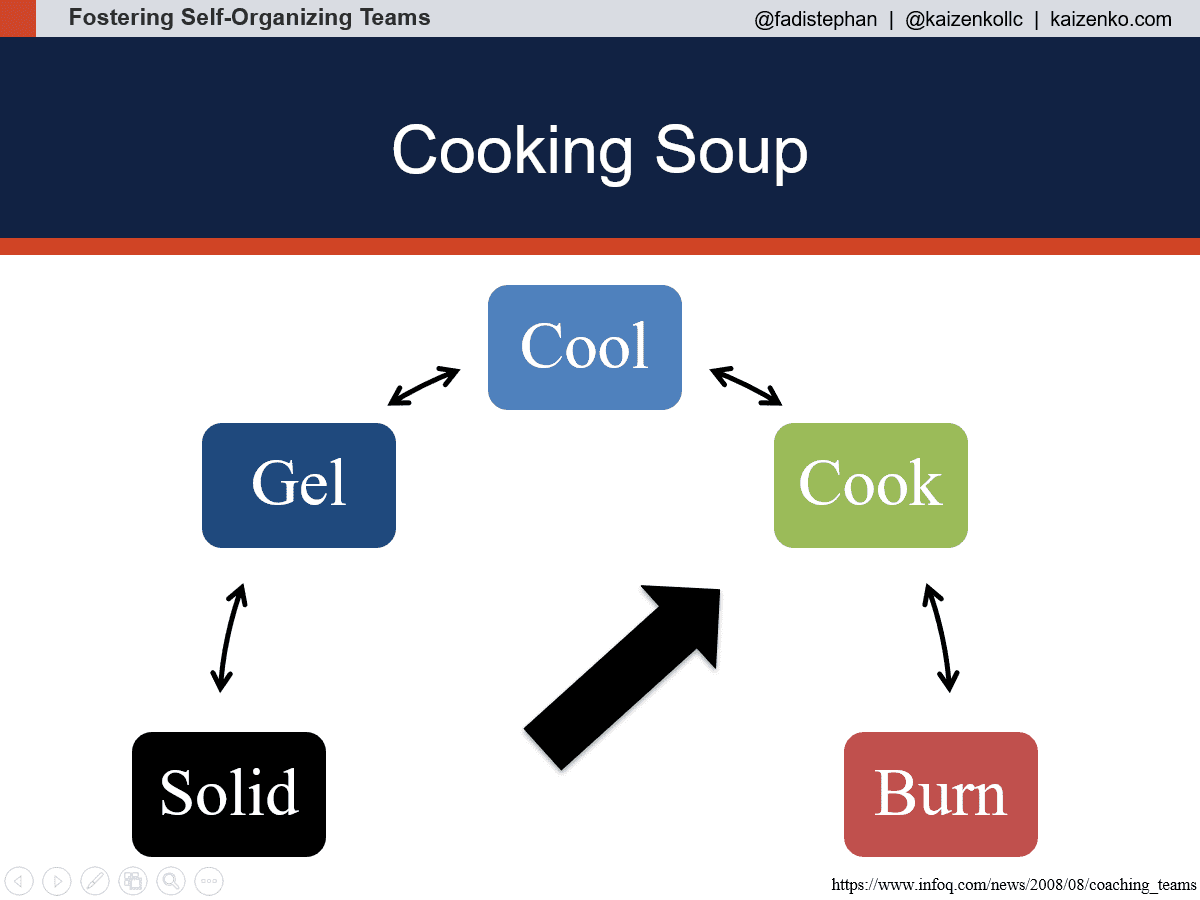So what’s the ScrumMaster’s role in getting a team to a high performing state? There are two parts to it. First, the ScrumMaster herself needs to be self aware of her individual skills development journey and understand at what level of expertise she is at and work on moving to the higher levels so she can effectively help the team as a whole. More on that in a later post.
An experienced ScrumMaster or servant-leader also understands team development models and adapts her leadership style as she helps the team transition through these stages to get them to a high performing stage as quickly as possible. Once there, the work continues by trying to keep them there for as long as possible.
Joseph Pelrine uses a great cooking chicken soup metaphor to describe the impact the ScrumMaster has on the team to get them to a high performing self-organizing state. In this metaphor, the team is the ingredients and the ScrumMaster is the cook. The cook has to constantly control the heat. Cooking chicken soup does not happen by just adding and mixing ingredients to a pot and then heating the pot. There has to be constant stirring and paying attention to heat level to keep the chicken soup cooking at the right temperature. Otherwise, it will transform into a not so delicious state. The states here are:
Burning – Team is are burnt out, stressed out, fighting. Things are falling apart. All the good things are evaporating.
Cooking – Not too hot to burn. Right on the border or chaos or anarchy. Team is highly creative, innovation, flexible. This is where we want to be.
Stagnation – Cooling off. What was good is becoming bad and moldy. People stop coming to meetings, no one writes tests, and everybody is procrastinating. Team members try something, hit a road block and then give up. The goodness is fading and there is not enough momentum or heat to sustain it or bring it back..
Congealing or Liquid – Things are running or like jelly, loosing flexibility and settling/solidifying bad habits. There is still some flexibility, but it is starting to take hard shape. Team is disinterested. There is no ongoing discussion and not much innovation is going on.
Solid or Frozen – This is the way things works here. There’s nothing we can do. There’s tons of bureaucracy. Team members are just indifferent. It a 9 to 5 thing. I just do my thing and leave. Zero initiative to do anything else.
The high and low stages show similar behavioral patterns. The key is to control the heat and stir to keep the team cooking without burning out.
Also check out the complete Fostering Self-organizing Teams series:
- What is a Self-organizing Team?
- Scrum Magic! Do Scrum – Become Hype-productive!
- 3 Models for Skills Acquisition
- Shu Ha Ri
- The Dreyfus Model of Skills Acquisition
- Situational Leadership
- Tuckman’s Stages of Group Development
- Drexler/Sibbet Team Performance Model
- The ScrumMaster’s Role is Fostering a High Performing Self-Organizing Team
- 7 Attributes of a Self-Organizing Team
- Delegation Board for Fostering a Self-Organizing Team
- The ScrumMaster’s Progressive Delegation Responsibility
- Fostering Self-Organizing Teams Presentation
